|
Sept. 23, 2021
Stay informed! Here’s a weekly summary of upcoming wildlife and habitat management activities and ways you can discover, explore and experience Minnesota’s outdoors.

Into the marsh! Waterfowl seasons begin Saturday
Minnesota’s regular waterfowl season opens a half-hour before sunrise on Saturday, Sept. 25. Hunters, please be aware of new regulations in effect for the 2021 season:
- Shooting hours end at sunset the entire season.
The Canada goose daily bag limit is five per day the entire season, with a possession limit of 15.
- In the South Zone, the split (closed period) is five days instead of 12 days. The closure is from Monday, Oct. 4, through Friday, Oct. 8.
- Motorized decoys may be used statewide throughout the entire waterfowl season, including on wildlife management areas. Remote controls for motorized decoys are legal.
- Information to help hunters properly identify waterfowl is available in an illustrated guide contained in the 2021 Minnesota Waterfowl Hunting Regulations.
Complete regulations and the illustrated guide also are available in Hmong, Karen, Somali and Spanish.
More details: DNR waterfowl hunting page
|
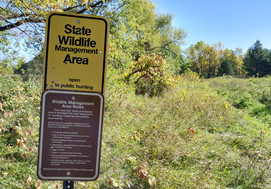
Teach a kid the fun of small game hunting this weekend
Getting youth outdoors in pursuit of squirrels, rabbits and other small game is the focus of Take a Kid Hunting Weekend on Saturday, Sept. 25, and Sunday, Sept. 26. During the weekend, adult Minnesota residents accompanied by a youth younger than age 16 may hunt small game without a license, although they must comply with open seasons, limits and other regulations.
Hunting small game is a great way to introduce kids to hunting. Kids learn how to search for game sign, properly handle firearms and access hunting land — all without too much time sitting still and being quiet.
For details: Recorded small-game hunting webinar and small-game regulations
|
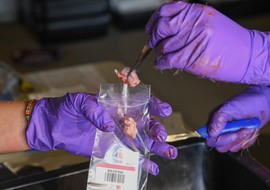
CWD in Beltrami County: You can learn more, ask questions at public meetings next week
Chronic wasting disease previously discovered in captive deer and its impacts on this fall’s deer hunting seasons in the Beltrami County area will be the focus of meetings scheduled Tuesday, Sept. 28, in Bemidji and Wednesday, Sept. 29, in Kelliher.
Deer permit areas impacted this discovery are 110, the portion of 169 west of Minnesota Highway 6, 184 and 197.
People unable to attend in-person can register to participate virtually in the Bemidji meeting.
Both meetings are scheduled from 6-8 p.m. The first is on Sept. 28 in the commons at Bemidji High School, 2900 Division St. W. The second is on Sept. 29 in the commons at Kelliher High School, 345 4th St. NW. People planning to attend either in-person or virtually need to register and submit questions ahead of time at mndnr.gov/cwd.
Information presented at the meetings will include presentations from the:
- Minnesota Department of Natural Resources’ regarding deer management and wildlife health programs;
- Minnesota Board of Animal Health; and
University of Minnesota’s Center for Prion Research and Outreach, which has conducted testing in the area.
- Representatives from each organization will answer questions after the presentations.
Additional information about CWD, sampling requirements for hunters who harvest deer and the DNR’s disease management strategy is available on the DNR website.
More details: DNR chronic wasting disease management page
|
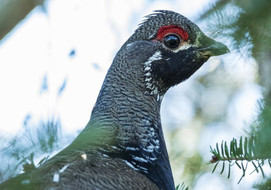
Hunters, please submit spruce grouse feathers for this study
Spruce grouse hunters in northern Minnesota’s boreal forests can voluntarily submit samples for the final year of a genetics research project being conducted by the DNR in partnership with the University of Minnesota.
Spruce grouse are a climate-sensitive species that rely on boreal forest habitats containing black spruce, jack pine and tamarack — all of which are expected to shift northward on the landscape as temperatures increase. This study will use grouse genetics to form a baseline of data to establish how spruce grouse currently use the landscape and identify changes in habitat connectivity over time. When habitat becomes fragmented and a species loses connectivity to its former range, the species can form smaller distinct genetic groups over time.
Hunters who would like to assist with the project should collect three to five large wing or tail feathers along with the GPS coordinates of the harvest location. The feathers, GPS coordinates and the hunter’s name and telephone number can be mailed to: Grouse Research, DNR Regional Headquarters, 1201 East Highway 2, Grand Rapids, MN 55744. Harvest locations will not be made public. Hunters are asked to mail samples from each bird in a separate envelope and not mix feather samples from multiple birds.
This research project is funded by the Legislative-Citizen Commission on Minnesota Resources (LCCMR) with dollars from the Environment & Natural Resources Trust Fund. Last year, 111 individual samples were submitted.
Small game harvest surveys show hunters have harvested anywhere from 7,081 to 19,130 spruce grouse annually over the last 11 years.
More details: DNR grouse hunting page
Photo thanks to Beau Liddell
|

Fawn study examines survival, movement and mortality
This past spring the DNR began a fawn survival study in south-central Minnesota to examine survival, movement and causes of mortality. The study objectives are to quantify the importance of fawn bed-site characteristics on avoiding predation, identify important landscape attributes, and identify the most important ecological factors influencing fawn survival.
Predation is the leading cause of mortality for white-tailed deer fawns, but quantifying the extent can help in determining their importance on the population and better understanding how fawns are using the land to avoid detection. The study also aims to uncover how fawns disperse and migrate in the farmland region to help understand habitat selection and deer ecology and also improve deer model assumptions.
To GPS-collar the fawns in the spring, biologists use drones with thermal infrared cameras to locate fawns in wildlife management areas across four deer permit areas (252, 253, 296, 299). Then biologists go place the collars on the deer. In all, 75 fawns will get such collars each year for three years.
Hunters: If you’re hunting in these permit areas, know that these GPS-collared deer are OK to harvest as if they were uncollared. If you harvest a GPS-collared fawn, please notify the Farmland Research Unit at 507-578-8912. It is important that DNR retrieves the collars because data is stored in the GPS unit on the collar.
More details: DNR deer permit areas
|
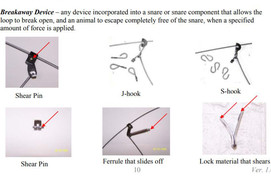
Reminder for trappers: Snare breakaway devices required
Trappers who use snares are reminded that snares capable of taking a wild animal must include a breakaway device that causes the snare loop to disassemble at 350 pounds of pull as measured by a static load test. This applies to all snares, except those set under the ice. Devices that cause the snare loop to disassemble at less than 350 pounds also meet this requirement.
Breakaway devices allow large, non-target mammals such as moose, elk, wolves, bears and adult deer to escape when the snare disassembles under high tension. Smaller target animals, such as coyotes, bobcats, and foxes, are not able to break the snare by pulling.
More details: DNR page on breakaway devices
|
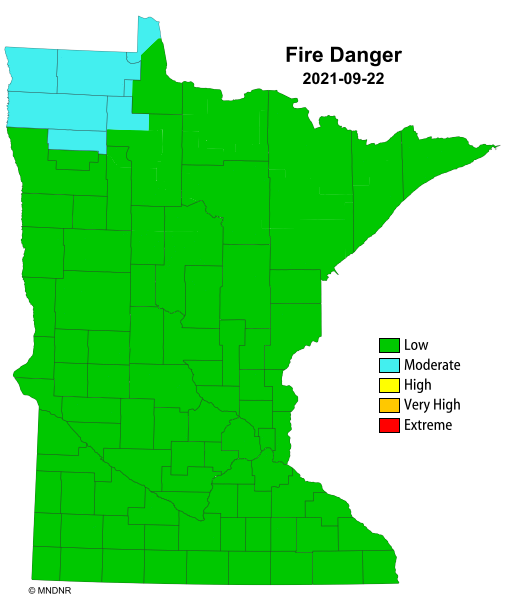
Wildfire-related burning restrictions lifted
Recent rain and a return of near-normal temperatures and higher evening humidity have greatly reduced the chance of campfires or open burning causing a wildfire in Cook and Lake counties. In response, the DNR removed burning restrictions in those counties on Sept. 21. Cook and Lake counties were the last two Minnesota counties under DNR-mandated burning restrictions.
The DNR will continue to monitor conditions and will reinstate county-specific burning restrictions if necessary. Of upmost importance is protecting the health and safety of the public and firefighters.
An area around the Greenwood Fire remains closed to the public. Under current fire operations, the incident management team for the Greenwood Fire needs to be aware of all personnel entering the area to ensure firefighter and public safety.
More details: DNR fire danger and burning conditions page
|
|